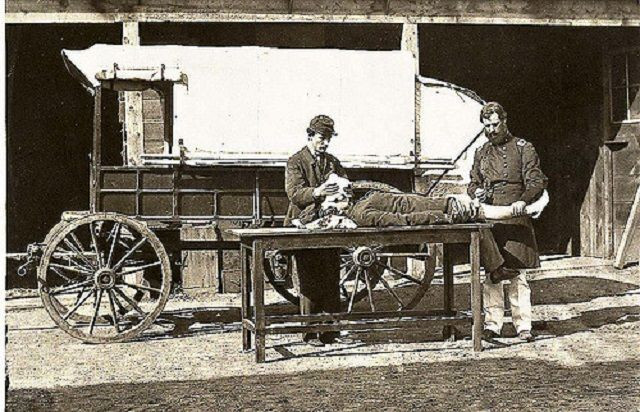Surgery Before Antiseptics: Gruesome, Bloody And Often Fatal

Surgeries these days are lifesaving marvels, but their history is less than lovely. Surgery used to be incredibly risky, painful and bloody before antibiotics, antiseptics and other modern medical marvels.
Let’s take a brief look at the history of surgery and why people were even more reluctant to go under the knife than they are now.
A Bloody, Deadly Past
Among the bloodiest wars of all time, the Civil War led to over 60,000 operations performed on the battlefield.
Most of these were gruesome amputations, all performed without the help of antiseptics or antibiotics to limit the chances of later infection. In lieu of the well-calibrated anesthetics we get today, soldiers were lucky if they managed to receive opioids or chloroform to dull the pain or knock them out, though these treatments could easily prove fatal or completely ineffective if the dose wasn’t just right. And it wasn't until a century later that medications that reduce blood loss, like tranexamic acid, would be discovered, making for especially bloody operations. Battlefield surgeons were also much more cavalier about their workspaces.
“One of the first things that met my eyes in camp,” wrote esteemed author Walt Whitman in a 1962 letter, “was a heap of feet, arms, legs, etc. under a tree in front of a hospital.”
So feared were these amputations that many soldiers begged to avoid them, oftentimes all the way to their graves.
“I have no hesitation in saying that far more lives were lost in refusal to amputate than by amputation,” wrote William Williams Keen, a medical student who learned his craft during the war.
Right as the war was about to end, a Scottish surgeon named Joseph Lister would revolutionize the surgical field. Starting in the mid-1860’s, he and his colleagues popularized the use of antiseptics to clean wounds and instruments prior to surgery, complete with astounding results. While nearly half of Lister’s surgical patients died between 1864 to 1865, only 15 percent did between 1867 to 1870.
Prior to Lister, most surgeons had taken an odd pride in being as bloody and messy as possible. (the existence of microbes and their connection to disease was still being debated around then). Earlier attempts to sanitize the practice of medicine by those like Hungarian physician Ignaz Semmelweis were swiftly mocked and largely forgotten.
Lister, for his part, wasn’t completely right either. He too didn’t think germs were the culprit of surgical infections, instead blaming the air, and his earliest antiseptics proved to be harmful to the surrounding tissue as well as germs. But thanks to him, surgeries steadily became safer and more practical.
Even today, though, we can still do better: A study published earlier this May in the BMJ , estimated that medical errors were the third-leading cause of death in the U.S., killing around 250,000 people annually.



























